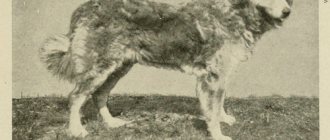Sooner or later the time comes when you have to say goodbye to your beloved four-legged friend. I will talk about the medical and moral aspects associated with the euthanasia of dogs, whether it is possible to euthanize a dog at home, and ways to maintain psychological balance after the loss of a dog.
Indications for euthanasia
Today's legislation does not regulate this issue in any way, so the decision to euthanize is made by the owner, and it remains on his conscience. Anything can happen. Sometimes people ask for euthanasia when the dog has not lived up to expectations, has grown unfriendly, disobedient, simply bothers its owners, or eats too much. In practice, one hears different arguments. But you need to resort to the procedure not when you want, but when there is no other way out.
Among the main indications:
- incurable diseases that cause long and painful death. Basically, these are oncological diseases at the stage when metastases have grown into several organs. At this stage, treatment is no longer possible, and the tumors become the cause of constant pain. The pet hardly eats, loses a lot of weight, and experiences suffering. In veterinary medicine there are only ordinary painkillers; there are no strong narcotic drugs for animals, so it is impossible to completely relieve pain and completely alleviate suffering. Chronic renal failure in the final stages may also be the cause. The kidneys do not work, the body does not cleanse itself, slowly being poisoned by the products of its own vital activity. The pet will experience constant pain, convulsions and coma;
- aggressive behavior. Of course, in the vast majority of situations, aggression is the responsibility of the owner. But there are situations when a pet can no longer be controlled, and its behavior becomes dangerous to others;
- injuries incompatible with life. Typically, these can occur as a result of an accident. If the animal cannot be cured, but the suffering can only be prolonged, then it is better to euthanize it;
- old age. True, it’s not just age, but the diseases that arise at this age.
Modern medicine can prolong the life of almost all animals, even if they are in serious condition. But, if the pet cannot get up, it develops bedsores, it begins to require care as a bedridden patient, which means that the owner will not be able to move away from it. You will have to provide constant round-the-clock care, and perhaps give up work. If the owner cannot provide such care, and the animal's suffering only worsens, euthanasia may be the most humane method of ending this life. Sometimes it is better to let go than to prolong the torment.
When is it time to sound the alarm?
“If the process of falling asleep lasts more than 20 minutes, and this situation lasts a week or more, this is a reason to consult a doctor,” says Gleb Lutokhin, a somnologist at the Semeynaya clinic. — If a person tosses and turns for a long time before going to bed, often wakes up during sleep and then cannot fall back to sleep for 5-10 minutes, this is a reason to think about it. Especially if these processes are accompanied by anxiety and obsessive thoughts.”
Insomnia has many adverse effects. The body does not have time to recover, the functioning of almost all systems and organs is disrupted. The nervous system suffers the most; the cardiovascular and endocrine systems, as well as the kidneys, work under stress.
“About 40% of my patients have a sleep disorder,” says GMS Clinic neurologist Sergei Makarov. — In young people, insomnia is a consequence of anxiety disorders or disruption of the daily routine. Due to the coronavirus epidemic, many people work from home until late and then sleep until lunch. And due to overexertion and lack of personal space, insomnia occurs. In older people, sleep disturbances can be caused by diseases of the heart, lungs, other internal organs, or chronic pain.”
So a young girl turned to Doctor Makarov. During the interview, it turned out that in addition to bad habits - smoking and drinking alcohol - she suffered from an incorrect daily routine. At night on weekends, the girl “hanged out” in bars and discos, sleeping off during the day. It is not surprising that the work week was difficult for the patient. The body did not have time to adapt to the daily routine when the weekend came again and history repeated itself.
How does the procedure work?
Euthanasia of dogs is a procedure that allows you to quickly and painlessly kill an animal. The humane method is death without fear, anxiety, or suffering.
The procedure can be carried out in two ways:
- blackout and rapid death. To do this, a large dose of anesthetics is administered intravenously, intramuscularly, subcutaneously;
- two-stage euthanasia. At the first stage, the animal is immersed in anesthesia; at the second, drugs are administered to stop the heart and breathing.
All other methods cannot be called humane, therefore their use is prohibited.
Non-benzodiazepine tranquilizers
This group of drugs has a milder effect on the dog’s psyche and central nervous system. As a sedative, the medication quickly eliminates anxiety without causing drowsiness.
Expert opinion
Makarenko Svetlana Igorevna
Practicing veterinarian, 15 years of experience.
Helps cope with phobias and is effective in treating urinary incontinence caused by sudden fear.
Buspirone
Veterinarians prescribe only one drug from the group of non-benzodiazepine tranquilizers to dogs - Buspirone (Russian name "Spitomin").
Even small doses of the medicine give a good result, so the product is suitable for calming small breeds.
The treatment is carried out over a course (4-6 weeks) and does not cause addiction or side effects. Reception begins with a small dose of 0.7 mg per kg of body weight twice a day, gradually increasing the amount of the drug to 1 mg/kg per dose.
How dogs are euthanized in the clinic
If the owner understands that he will not be able to cope with the pet during the procedure, then he can contact a veterinary clinic. The doctor will do everything possible to ensure that the owner has the opportunity to say goodbye to the animal in order to alleviate the pet’s suffering.
In most situations, two-stage euthanasia is used. The owner may be present while the veterinarian administers anesthesia. At this stage the animal is simply sleeping. Then the owner is asked to go out into the corridor. Then drugs are administered that stop the dog’s heart and breathing. The doctor checks the absence of reflexes and declares death.
Next, the animal’s body may be given to the owner for burial or cremation may be offered.
What medications to take on a long trip?
Any travel is stressful for a dog. She may show signs of nervousness, try to escape from the vehicle, and even become aggressive. For this reason, dog owners are advised to take anti-stress medications and short-term sleeping pills with them on long trips.
All these products must be in tablet form. It is not recommended to inject sleeping pills on the road.
The most commonly used means for transporting pets are:
- "Nalbuphine."
- "Relanium".
- "Butorphanol".
- "Vetranquil."
In any case, you can use this or that sleeping pill only after the approval of a veterinarian.
Euthanasia at home
If the owner wishes, the dog can be euthanized at home. Typically, the procedure is carried out under such conditions in several situations:
- the dog is too old to be transported;
- the dog is heavy and it is difficult for the owner to transport it to the clinic;
- the animal is in very serious condition;
- They don’t want to create a stressful situation for the pet.
It is important that even at home a professional should work. Only he can carry out the correct preparation, calculate the dose and administer the drug correctly.
Otherwise, the procedure is exactly the same as in the clinic. Afterwards, the body can be left for burial or given for cremation.
Unmotivated aggression
The euthanasia of dogs in cases of aggressive behavior causes a lot of controversy. It is often explained as a complex character, but this is a mistaken position that poses a potential threat. A dog should not be aggressive unless it is on guard duty, so pets should not display such characteristics in principle.
Aggression for no apparent reason indicates mental disorders, which, unfortunately, cannot be corrected. Sooner or later, such a dog will attack a person, and the first victim will most likely be the weakest “opponent” - a child. Therefore, the question: whether to euthanize a dog that shows aggression without an adequate reason is not really a question, but a necessity.
If there was an attack on a person, and it was not a single bite, but a full-fledged attack, then it is necessary to immediately euthanize the dog, in a clinic or at home - it doesn’t matter. Remember, you can order dog euthanasia service at home in our clinic in Moscow.
How does the dog feel?
If you decide to carry out the procedure, it is very important not to begin to attribute your own mental anguish to the animal. It does not know about the upcoming procedure, so you should not think that it should experience anything special about this. Animals are not capable of reflection. So you can rest easy.
A sick animal does not think about the issues of the near future, does not experience an imminent separation from its owner, and especially is not afraid of death. What it really feels is pain that it wants to stop.
If an animal suffers for a long time, then of course it is stressed. Of course, it may feel afraid of doctors or clinics. That’s why the owner’s support at the moment of falling asleep is so important for him. It should feel the love and peace coming from you.
If we talk about how the animal feels directly during the procedure, then it is worth mentioning right away that euthanasia is intended to interrupt the pain, and not to cause it, so first the pet is given anesthesia. It turns off pain receptors and puts the dog into deep sleep. These are the animal’s last sensations – relief and relaxation.
Before carrying out the second stage, the veterinarian makes sure that the dog has ceased to feel and is sleeping deeply.
When is sleep disorder especially dangerous?
After just three completely sleepless nights, a seemingly healthy person may experience delusions, hallucinations, attacks of acute psychosis, and epileptic seizures. Seven days spent without sleep ends in guaranteed death. It has long been established that symptoms of insomnia are independent risk factors for heart disease and stroke.
In some cases, sleep disturbance is not even a bell, but a bell signaling a mortal danger to life. Gleb Lutokhin says:
“A strong young man, 28 years old, complains of snoring and sudden cessation of breathing during sleep. At night, the wife had to push her husband away more than 40 times an hour, restarting the breathing process. This is a case of central apnea - a pathology in which the medulla oblongata stops giving the body the command to inhale. Such situations very often end in the death of the patient. As it turned out, the patient had a congenital organic pathology in which the vertebral artery compresses the respiratory center of the medulla oblongata. We have selected the appropriate ventilation option. For the rest of his life, the patient will have to sleep with a device that will control his breathing and breathe for the owner in those moments when he stops doing it on his own. But the patient sleeps well, does not get tired during the day, and has even lost weight.”
How to cope with the loss of a pet
If it was difficult for you to decide on the procedure, if this is a truly beloved pet and even a friend, then you will worry in any case. It is impossible to remain indifferent in such a situation.
How can you help ease your own suffering? First of all, don't be shy about your feelings. Crying is natural and normal, expressing your emotions is possible and necessary. But you can’t isolate yourself. If someone tells you that this is a small loss, since “it’s just a dog,” you shouldn’t listen to them, they haven’t experienced this themselves and cannot understand you.
Secondly, don't blame yourself. You did everything possible, and made such a decision to alleviate the suffering of the animal. There is no need to torment yourself and prevent yourself from moving on with your life.
Thirdly, you don’t need to get a new pet right away. First you need to fully recover from the loss of your old one, and take on a new one only with complete psychological readiness.
Euthanasia of dogs is a responsible and painful procedure for the owner. Therefore, it is very important to be confident in your choice and your decision. To do this, you need to enlist the support of doctors who will definitely assure you that there is no chance of recovery or any relief for your pet. To avoid making the wrong choice and making the wrong decision, it is best to consult with different specialists.
Tricyclic antidepressants
Serious side effects are possible in dogs after taking medications of this group, so the doctor prescribes them only in special cases - with panic fear with obvious aggression, obsessive disorders and various phobias. But first the animal is examined: it is necessary to make sure that there are no contraindications.
The most commonly used antidepressants in veterinary medicine are Clomicalm (Clomipramine) and Elavil (Amitriptyline).
These products have a cumulative effect, so the first results of treatment will be noticeable after 1.5-2 weeks.
The course begins with a small dose, gradually increasing to the optimal dose, which is determined by a specialist.
During treatment with tranquilizers of this group, blood control is required, because the drugs suppress the hematopoietic processes occurring in the bone marrow.
Antidepressants: selective serotonin reuptake inhibitors
Tranquilizer inhibitors are indicated for panic disorders, general anxiety, fear of loneliness, compulsive behavior and aggression. But to achieve at least some results in treatment, a long course of therapy is necessary.
In this case, side effects are possible - drowsiness and problems with the functioning of the gastrointestinal tract.
The list of selective inhibitors includes the following drugs used on dogs: Ladose, Prozac, Sarafem, Solax. These are all analogues of the drug known as Fluoxetine.
As in other cases, the course of treatment with inhibitors begins with minimal doses and is gradually increased to the maximum allowable amount. For the treatment of dogs, the start starts at 0.7 mg/kg per day and increases to 1 mg/kg.
Fifth stage. Cremation
Even before the veterinarian euthanizes your dog, you need to decide what you will do with his body. If after euthanasia you will not be able to take your pet’s lifeless body far into the forest for burial, order cremation of the remains at a special zoo crematorium.
When the specialist euthanizes the animal, he will place its body in a special container and take it with him for subsequent burning. We recommend choosing individual cremation: its price is higher, but the ashes of your pet will be returned to you, collected in a ritual urn.











